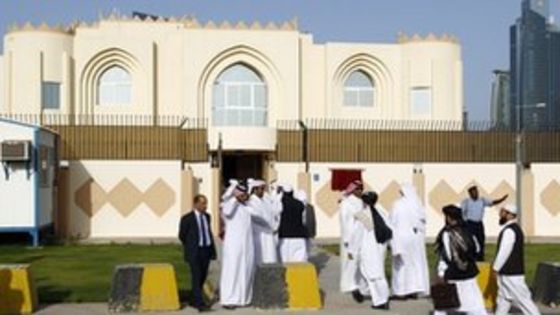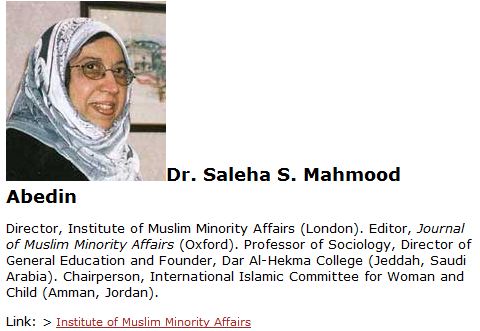Deceased ISIS Terrorist Was On Maine’s Welfare Rolls
DailyCaller: Adnan Fazeli lived in Freeport, Maine with his wife and children. An Iranian refugee, he worked several jobs between 2009 and 2013, before boarding a plane to Turkey without his family.
He never returned. Documents released earlier this month show he became an ISIS fighter and was killed by Lebanese forces in January 2015. And during his four years, he and his family used federal and state welfare programs that The Boston Herald reports allowed him the time to self-radicalize over the Internet.
Maine Governor Paul LePage reacted strongly to the news. “I’m having [the Maine Department of Health and Human Services] look at our welfare rolls closer,” he said last week. “All the other states should look at the eligibility, too.”
According to LePage, the federal government is at fault for letting Fazeli in the country. “If people need to eat, I’ll feed them. But I want to keep Americans safe,” LePage said. “This is very embarrassing to the state of Maine, and I point the finger at the president and say, ‘How did this happen?’ If the federal government doesn’t do their job we don’t know what we’re getting.”
LePage’s comments drew criticism from Maine’s branch of the ACLU. The group’s executive director, Alison Beyea, accused him of violating federal laws requiring the privacy of welfare recipients after the Herald reported a LePage administration source disclosed the receipts.
“The LePage administration reportedly exposed a family’s private information in order to further its anti-welfare agenda. Who knows whom the next target will be – the elderly, people with disabilities,” said Beyea. “No one should have to worry about their personal lives being leaked to the press anytime the administration wants to score political points. But if it happened to one family, it could happen to any of us.”
A LePage spokesperson says that the governor’s office did not disclose the information to the newspaper. “The reporters [at the Boston Herald] already had the information when the governor spoke with them,” said the spokesperson.
Steve Robinson, the Executive Director of the Howie Carr show who previously worked at the Maine Heritage Policy Center, told TheDC, “This so-called ‘Freeport Man’ should not have been in the country. Cursory vetting would have flagged him as a risk.”
“Maine’s sanctuary policies and easy-money welfare system allowed him to spend his free time watching Anwar Al-Awlaki propaganda videos rather than working,” continued Robinson, who said that “LePage has been extraordinarily successful reforming Maine’s welfare system despite stubborn opposition from left-wingers in Augusta. The reforms he has implemented are helping Mainers move from welfare to work and reducing fraud throughout the system.”
The Portland Press Herald reported that 105 welfare fraud cases were sent to the state Attorney General’s office. A total of 36 convictions came from those cases, all against U.S. citizens, and restitution totaling $467,300 was ordered, according to a spokesperson for the Attorney General’s office.
The Herald also examined Maine state records and found that “there were 35 non-citizen families out of a total of 4,854 families receiving TANF benefits, and 361 non-citizen families out of a total of 100,648 families receiving food stamps.”
Fazeli is not the first suspected or proven terrorist to have used government welfare funds. At Conservative Review, Ben Johnson highlighted several prominent examples, including the Tsarnaev brothers who committed the Boston Marathon bombing in 2013.
“The most conspicuous example are the Tsarnaev brothers,” writes Johnson, “who collectively received in excess of $100,000 in welfare payments from food stamps and Section 8 housing. Tamerlan Tsarnaev, a onetime Golden Gloves boxer, remained on food stamps until his family income — earned primarily by his wife — exceeded the amount Massachusetts allows for food stamp beneficiaries.”
Johnson also highlighted recently convicted terrorist supporter Anjem Choudary, who in Britain received “£8,000 pounds more on public assistance than soldiers fighting the Taliban,” according to Johnson. Likewise, 9/11 conspirator Zacarious Moussaoui received welfare in Britain.
According to recordings released in 2013, Choudary preached that jihadists should work as little as possible, and “take money from the kuffar [non-believers]” so they can be “be busy with jihad and things like that.”
A nephew of Fazeli says the deceased terrorist’s wife and children, as well as Fazeli’s extended family, were unaware of his radicalization. The family was taken off of welfare rolls after Fazeli left the country.
In Europe also:
Terrorist Suspects in Europe Got Welfare Benefits While Plotting Attacks
SofRep: Belgian financial investigators looking into recent terror plots have discovered a disturbing trend: Some of the suspects were collecting welfare benefits until shortly before they carried out their attacks.
At least five of the alleged plotters in the Paris and Brussels terror attacks partly financed themselves with payments from Belgium’s generous social-welfare system, authorities have concluded. In total they received more than €50,000, or about $56,000 at today’s rate.
The main surviving Paris suspect, Salah Abdeslam, collected unemployment benefits until three weeks before the November attacks—€19,000 in all, according to people familiar with the case. At the time, he was manager and part-owner of a bar, which Belgian officials say should have made him ineligible.
Many of the participants in a disrupted Belgian terror plot also had been on the dole, according to the judge who sentenced more than a dozen people in the so-called Verviers cell last month. Police thwarted the plot early last year, finding explosives, weapons and police uniforms after a shootout that killed two people.
The revelations raise a difficult conundrum for Europe.
Read More- The Wall Street Journal
Anjem Choudary sentenced to prison
‘Claim jobseeker’s allowance and plan holy war’: Hate preacher pocketing £25,000 a year in benefits calls on fanatics to live off the state
- Anjem Choudary called benefits ‘Jihadseeker’s allowance’
- The extremist told followers they must hate democracy and freedom
- Also listed bizarre sharia laws, including ‘not riding cats and sheep’
- Later said he had been ‘joking’ and his words were misconstrued
- He called Osama bin Laden his ‘hero’ Full story here from DailyMail






